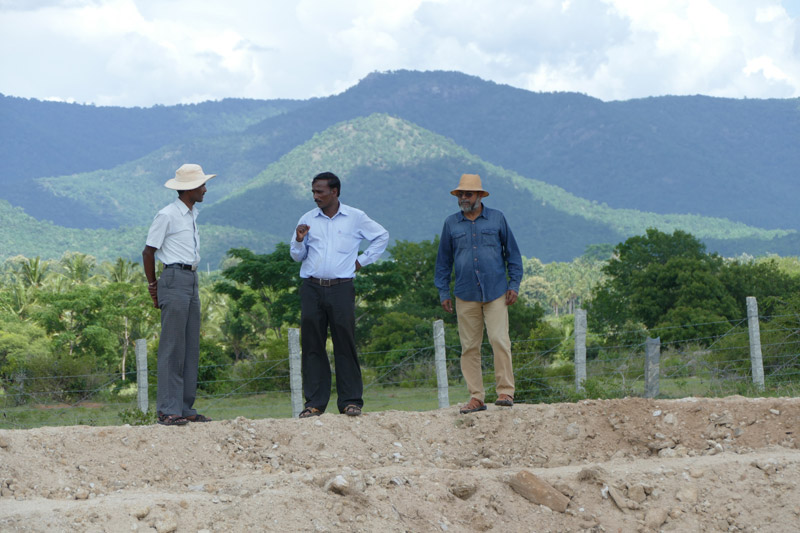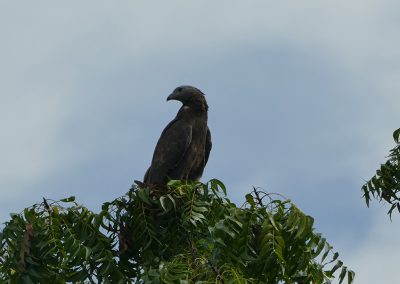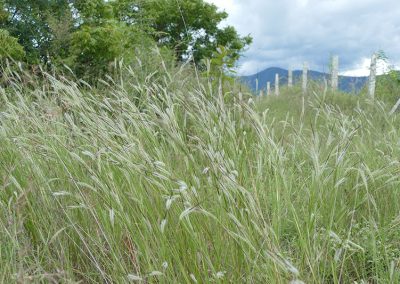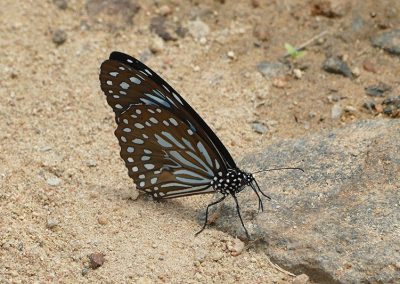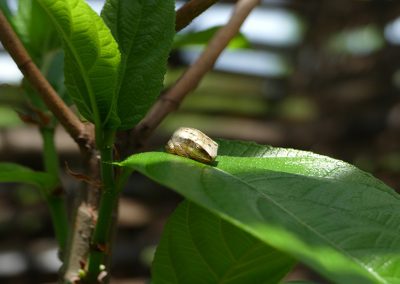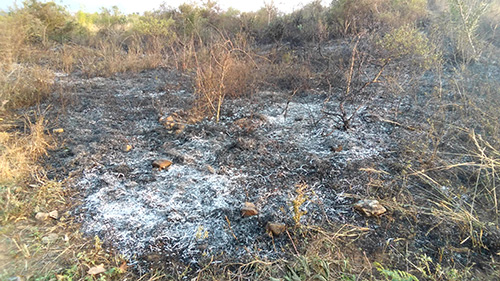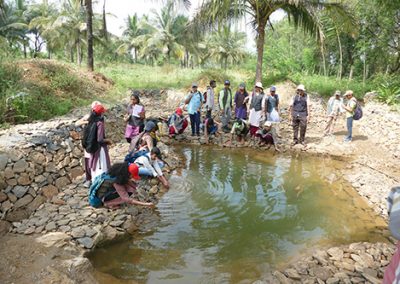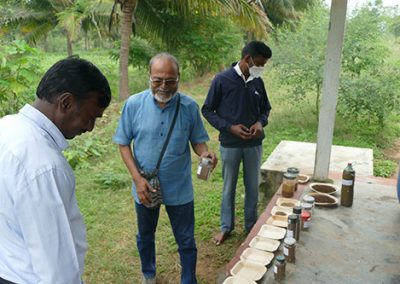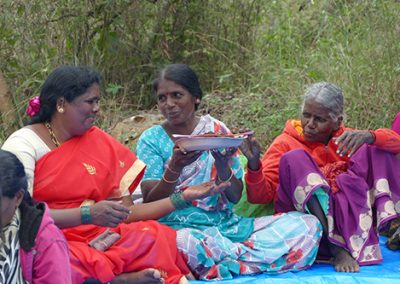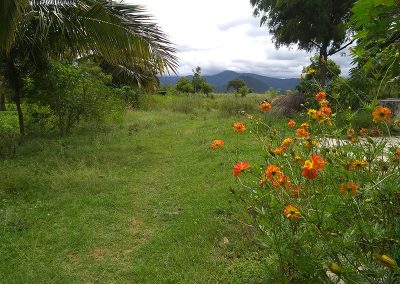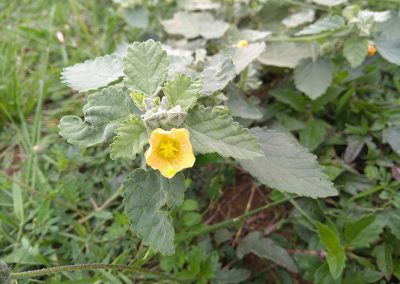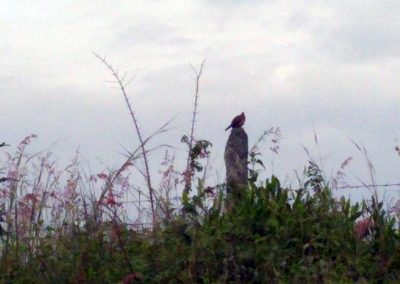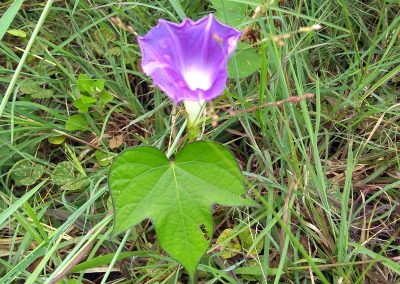ANGARIKE MAALA (Meadow of Dodonaea)
LAND RESTORATION AND AGRO-BIODIVERSITY CONSERVATION

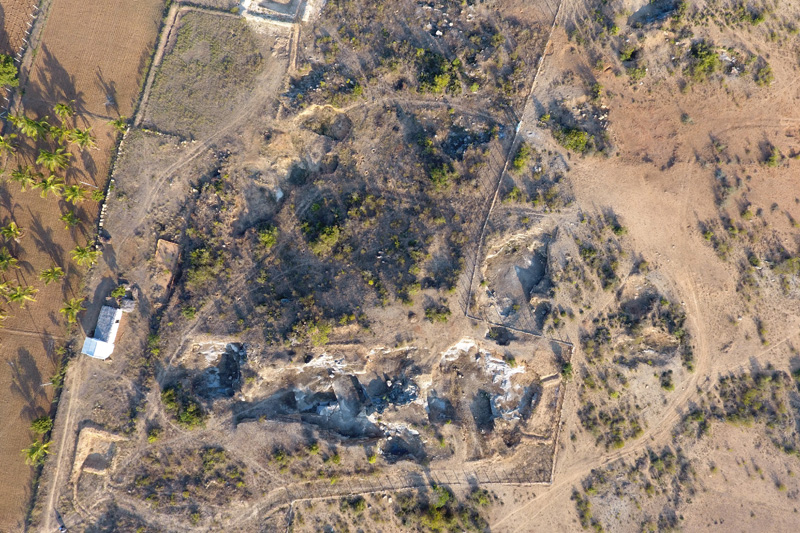

Work on the land continues; the soil is being monitored for changes and improvement, earth works such as bunds are being constructed, tree saplings planted, and two rounds of cultivation are undertaken every year. The challenges of cultivating the land for food crops and growing trees without adequate rainfall or supplementary irrigation continue. The post-monsoon saw the land turn green and a number of wild flowers and creepers made their presence. But the failure of the returning monsoon saw a dip in the productivity of crops and subsequently the land turned brown and bare. We continue to engage with the vagaries of the weather and hope to turn Angarike Maala into an ecologically sustainable and economically viable demonstration site.
2024
ANGARIKE MAALA: INAUGURAL OF THE NEW UTILITY COMPLEX
Ten years since we purchased this highly degraded and abused piece of land, we have now worked to transform it into a place for ‘experiential learning’. On September 22, 2024, we inaugurated a small utility complex and two small units (a bio-resource unit and a seed-bank). We are grateful to Indesign, Bengaluru for designing the complex so as to blend it into the landscape. Thanks are to MoonFrog Labs, Bengaluru who generously funded the construction and the activities including conservation work at Angarike Maala. Contributions from Aroon Raman and several other friends also made this possible. Thanks are to Sunita Rao (founder of Vanastree) who helped develop the seed bank.
ANGARIKE MAALA: A LIVING LAB (An experiential Learning Space)
Since 2015, PUNARCHITH has been engaged in restoring a highly degraded and barren 7-acre parcel of land called ‘Angarike Maala’ (meadow of Dodonaea viscosa) near Puttanpura Village, Chamarajanagar district, Karnataka. Our focus has been on restoring the soil, seed, water and biodiversity of the land so as to develop it into a demonstrative plot for regenerative agriculture, community-owned and group led agriculture, and for various methods and practices of conservation and alternative learning. Based on the suggestion of the landscape architects, INDESIGN, Bengaluru, we are now striving to transform this land into a ‘Living Lab’. The activities and programs at this ‘Living Lab’ will relate to: place-based and experiential education; community ownership and responsibility for natural and agricultural resources; restorative agriculture that can address climate change issues; conservation of seeds, water, agro-biodiversity and soil; alternative technologies, use of both traditional and appropriate modern methods in cultivation; demonstration of use of appropriate technologies, energy conservation etc.
Programs Planned:
Out-reach, learning, experiential visits, camps, and modules have been designed for the following participants:
- Farmers (women, men and youth): restorative agriculture, climate change mitigation and resilience, agro-processing, seed saving, alternative technologies, sustainable buildings etc.
- ural Citizens (all ages and backgrounds): democracy, decentralised administration; sustainability; climate change adaptation and mitigation
- hildren: experiential learning, ‘a sense of wonder’ exercises, self-discovery,
- rban youth (high school, college, university)/Students: exposure to rural and agrarian issues; experiential learning, self-discovery; place-based learning
- dministrators and Officials: restorative agriculture; conservation of soil, seeds, water, and bio-diversity, value-addition to agricultural produce
- eneral Public and Civil Society Members: Special programs on selected themes especially on the approaches to social justice, economic stability, ecological sustainability, and political accountability.
PHOTO DOCUMENTATION OF ANGARIKE MAALA:
It has been several years since we had a professional photo documentation of Angarike Maalaa. Since the drought in 2023 had devastated the land and the construction has also disrupted the area, we thought this phase of great disruption should also be documented. Dr. M. Vivek of Bengaluru kindly consented to undertaking this documentation at non-commercial rates. He came with an assistant, Akash, and photographed the land during various times of the day.
Some key photographs from Dr. Vivek:



2022
We began construction in April 2022 of a small utility complex with architectural support from InDesign, a landscape specialist group, from Bengaluru and the contractors, ValueTech. While the production of local, mud blocks etc were expedited, work stalled from Deepavali onwards when the workers went for their holidays. Delayed construction has meant that many of our programs did not get the benefit of having basic facilities at the land and worse yet, the area around the construction has become subject to all the depredations of the construction activities. We hope this will end soon and we can reclaim the area as part of our biodiverse land which will also accommodate humans.
April 2023, saw only light rains but a plethora of local flowers sprang up.

‘Taragu Benki’ or ‘litter fire’ experiment and observations:
Dr. Samira Agnihotri initiated trials of the traditional Solega method of litter fire at Angarike Maala. Three Solega men, Range Gowda, Kethe Gowda, and Veere Gowda, have been coming regularly to conduct the annual fires and to also help with documentation and identification of plants/grasses. In addition, Solega elder women, Masanamma and Rangamma and their daughters and granddaughters, have also come and identified the plants that have grown in this site. A key feature of these visits by the Solega has been the fact that they are able to relate to the landscape and to the flora and fauna and has led them to have singing and dancing sessions there. This has also consolidated their confidence and the need to retrieve their knowledge and practices related to landscape conservation. Details of this are being documented (written and photographs) by Vinay Kumar.
2021
Angarike Maala: Towards making it a ‘Living Lab’
Over the past year, in collaboration with the Indesign team of landscape architects, we have reconceptualized Angarikemaala as a possible ‘Living Lab’— a space where ideas about ecological conservation, economic viability and social justice can be tried, debated, show-cased, and shared.
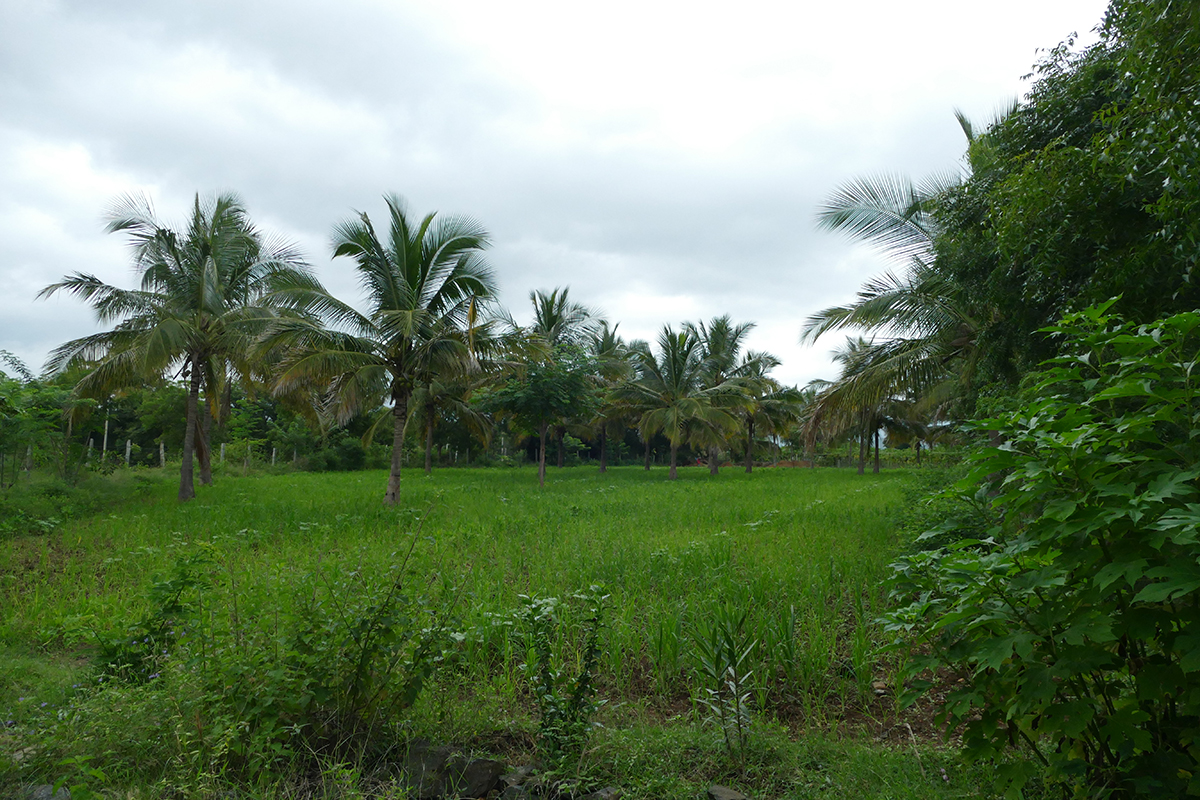
A bamboo nursery and a small patch of ‘litter fire’ or taragubenki have been carried out with advice, skills and knowledge from Solegas (an Adivasi group that resides in the region). New earthworks were initiated with the help of Bovis (stoneworkers) from Nagavalli and these efforts have helped us take a few steps towards developing Angarikemaala (AM) as a demonstrative place for local knowledge and sustainable practices.
Over the months, it has been our pleasure to see and enjoy the land sprout several species of grasses, wild flowers, and creepers. Several small creatures have started to visit the land and make it their habitat. 2021 has witnessed one manifestation of climate change in the form of excessive rains during the North-East monsoon. Our thriving fields of ragi, pigeon pea, green gram and horse gram were victims and we harvested less than a quarter of what we had expected. These are key lessons for us: to prepare to mitigate and adapt to climate change, therefore another responsibility that Angarike Maala as a ‘Living Lab’ will have to play.
2020
Five years since initiating restoration cum conservation work— is a turn-around year for Angarike Maala. The intermittent rains brought a host of newcomers to the land; mushrooms sprang up, as did a variety of creepers, flowers, shrubs and a multitude of grasses. The neem tree invited a small bee-hive and weaver birds wove their nests on the beautia tree. All-in-all a reassuring time for us, to see the land revive, express its wealth of local biodiversity, and show signs of encouragement to us. And, the most exciting was the yields of fruits: chikoos, pomegranate, papaya, passion fruit, and wit lemon, all in small quantities but which gave us immense pleasure.
We took some of the alumni from the Integrated Learning Course to see the land and they thrilled at seeing how the land has been transformed. A small film captures them on the land as they traverse the small ‘re-wilded’ area; now full of grasses, shrubs, trees, and visited by a variety of butterflies, birds, rabbits and an occasional wild boar or two.



